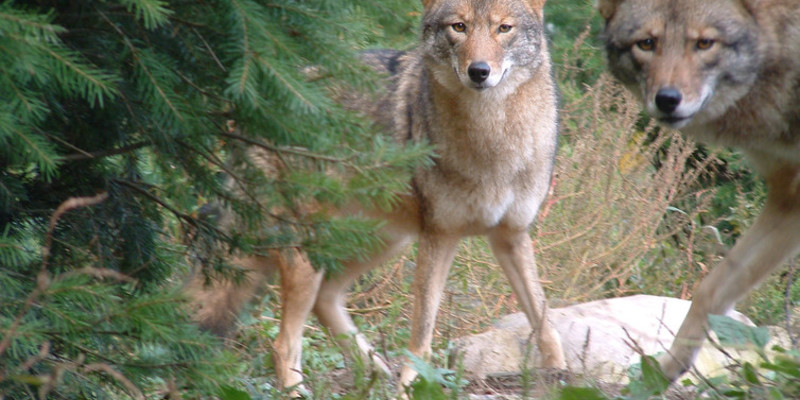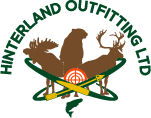Coyote, Wolf, Coywolf! The Newest Predator!
Back to Blog
On January 27th, 2017 the government of Newfoundland released a statement indicating that a coyote or wolf like animal that had been trapped in Central Newfoundland in November of 2016 by trapper Kevin Strowbridge was a cross breed between a Gray Wolf and an Eastern Coyote, a form of coywolf.
Biologists say that cross breeding can occur when a suitable female Gray wolf is not available to the male during the breeding season, as it is usually only the male wolf that cross breeds.
This would lead me to believe despite our governments restraint in admitting that wolves are currently breeding on the island, that they are indeed doing just that. I will not be convinced that this animal crossed the ice flows as supposedly did its parents. It further strengtens my belief that wolves are here and they are breeding and if a suitable mate is not found the smaller coyote will suffice. Regardless of whom it breeds with, the resulting offspring still spells trouble for Newfoundlands moose and caribou big game population.
The Eastern Coyote is actually a hybrid in itself, genetic testing has proven that it is actually a combination of three separate species, wolf, coyote and dog. The percentage of gene domination that defines individual animals varies within the vast geographical locations that these animals inhabit, however the overall result of cross breeding is an animal species that generally grows much larger than a normal coyote enabling them to take much larger prey on a regular basis.
The hybrid offspring that are produced are highly versatile, adaptable and supreme predators that can prey on everything from a grasshopper to a fully grown adult moose. With longer legs that increase running speed, increased muscle mass and weight they are adept at taking medium sized game such as caribou and deer, especially in open areas. Because they also form packs they can easily take down the much larger moose which they often do when the correct circumstance presents itself.
Their overall diet is intriguing in that they can survive on insects, shrews, mice, voles, squirrels, ducks, geese, grouse, hares, ptarmigan, song birds, eggs, berries, nuts, wild greens and garden produce. They also readily avail of any carrion they find.
These hybrids can make their home in the deepest and darkest solitudes of our forests or they are equally content in our towns or cities where they have learned to keep a low profile during the day and becoming mainly nocturnal. Domesticated cats and dogs frequently fall prey to these animals in these conditions.
A unique distinction of this animal is that coyotes would prefer hunting in more open areas such as bogs or frozen ponds then dense forests, however the same is not true for wolves which would prefer to hunt in covered areas. The coyote-wolf cross because of its lineage is comfortable at hunting in either scenario, thus making an ideal animal to thrive in Newfoundland with its vast areas of open bog lands, waterways and forests.
It is my suspicion that Newfoundland now has all three species inhabiting its landscapes. Coyotes were probably the first, then came the wolf. As with any new introduction into an area it takes time to get established and that is exactly what we are seeing. With only a few wolves roaming the island initially the chances of individuals encountering one another and mating were subdued so time was required. However I do feel confident that the time has come when wolves are breeding with wolves and coyotes with coyotes and the fact that the latest animal subjected to DNA testing proved to be a coyote wolf cross leads me to believe that there is also breeding from one species to another. We currently may not have a large enough wolf population for every wolf to breed with another of its species, but apparently we don’t need to as cross breeding with coyotes is favorable in the absence thereof.
Should Newfoundlanders be concerned? I think so.
Here are some characteristics of a wolf-coyote cross:
In general coywolves show a combination of both of their parents but their overall appearance is larger and more wolf like. Their heads are both larger and wider. The muscles of the jaw are also larger and thus stronger but do not equate with that of wolves. The ears are shorter and more rounded than wolves but not as pointy as coyotes. Their overall markings are more inline with wolves then they are coyotes with exceptions. The color of the fur is often varied with reds and browns to white and grey. They are social canids living in small packs with 3-5 members.
These characteristics outline an animal that is more in tune with its wolf decendacy then the smaller coyote which to me warrants additional attention. It is much more capable at taking down our big game species then coyotes and that in it self is not encouraging. It is apparent that wolves and coywolves roam freely throughout Newfoundland and we have little knowledge regarding their numbers, distribution or food preferences. To the best of my knowledge their is no official recognition of the actual existance of wolves or coywolves on the island from our provincial Wildlife department, given the evidence how this can be is anybody's guess. One can only assume that over time their numbers will dramatically increase if no measures are implemented to prevent it.
Perhaps the dominant species to emerge from these three predators will be the “coywolf” but it really doesn’t matter, at the end of the day it is just another variation of two highly efficient predators that are already established here and no control measures in place to combat their rising numbers.
Perhaps it's now time for our Wildlife Department to get engaged, do the science and at least advise the general public on such things as to the numbers of these animals and their potential impact on our ecosystem. Maybe then any control measures, if required, could be considered.



